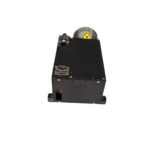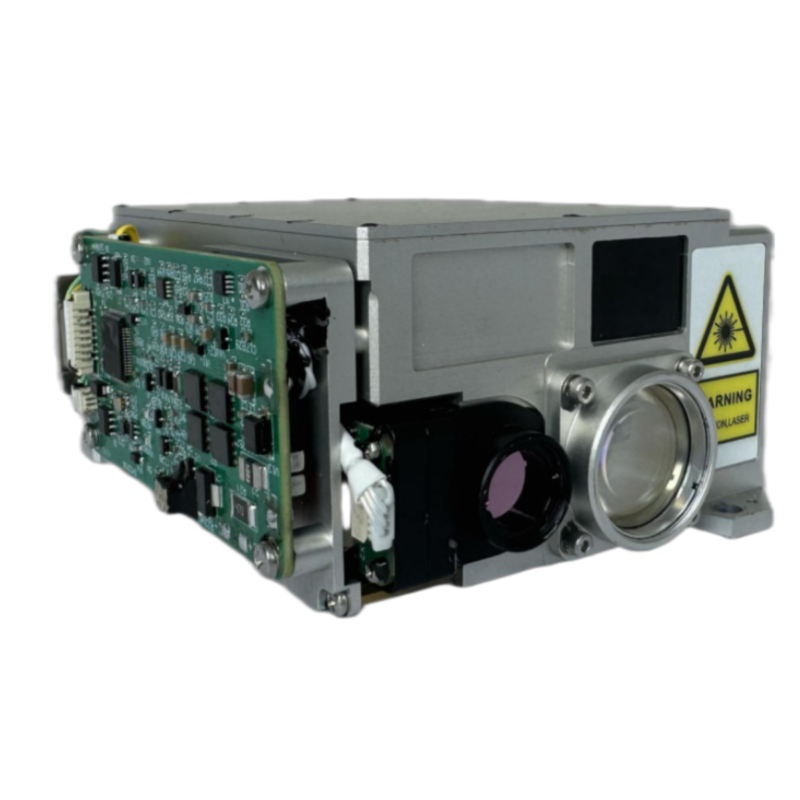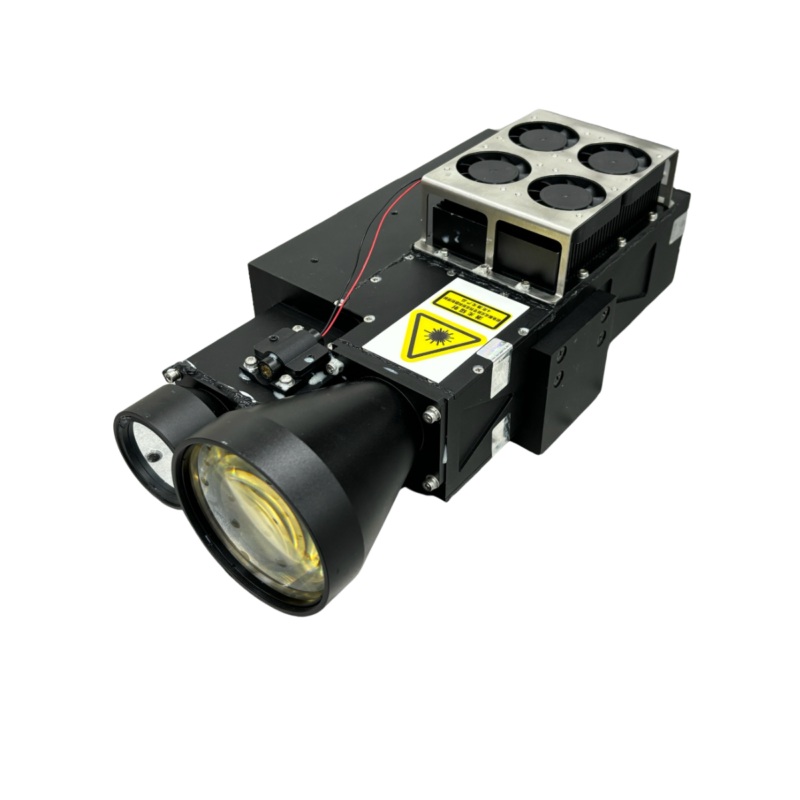TECHNICAL SPECIFICATIONS
Parameter Indicators | |
Pump Source | Laser LD (Laser Diode) Pumping |
Cooling Method | Passive cooling, no temperature control |
Working Mode | Laser Ranging, Laser irradiation |
Operating Wavelength | 1064nm±1nm |
Pulse Energy | ≥100 mJ |
Laser Energy Stability | Within a single irradiation cycle, the pulse energy fluctuation does not exceed 10% of the average energy. |
Pulse Width | ≥15ns±5ns |
Beam Divergence Angle | ≤0.15 mrad |
Stability of The Laser Optical Axis | ≤0.05mrad |
Ranging performance | |
Ranging Frequency | 1~25 Hz |
Continuous Ranging Time | ≤300m |
Maximum Ranging Distance | ≥20 km (Under the conditions of a target with a size of 2.3m×2.3m, a diffuse reflectance coefficient of not less than 0.2, a visibility of not less than 23 km, and a relative humidity of not more than 70%) |
Ranging accuracy | ±1m. |
Successful Ranging Rate | ≥98% |
Continuous Laser Ranging Time | 5min(1Hz)/1min (5Hz)/20S(20hz) |
Irradiation Performance | |
Precision of Laser Coding | ±1μs |
Trigger mode | Internal synchronization irradiation, external synchronization irradiation (trigger delay: 304.0us ± 0.1us) |
Laser Irradiation Frequency | 1~25Hz |
Laser Irradiation Distance | ≥15km |
Laser Target Designation Cycle | Short – duration irradiation mode: The irradiation time for each cycle is 17 seconds, with an interval of 30 seconds. It can perform continuous irradiation for 8 cycles.
Long – duration irradiation mode: Working 90s,pausing 60s;4 cycles(ambient temperature or low temperature);1 cycle(high temperature) |
Laser Coding | |
It complies with the requirements of MIL-STD-810G standard and has the expandable capability of user self-coding. | |
It has the ability to receive external synchronous signals and encodes by controlling the laser beam emitting mode through external signals. | |
Coding method: Precise frequency code (encoded with eight groups of pre-stored periodic codes). | |
Dimensions and Weight | |
External Dimension Envelope | ≤230×130×96mm |
Weight | ≤1500g |
Degree of non-parallelism between the installation reference base and the optical axis | 0.5mrad |
Input Power Supply Requirements | |
During operation, the average power consumption is not more than 55W, and the peak power consumption is not more than 100W. | |
The operating voltage range is from DC 24V±4V. | |
Three-proofing for Electrical Components | |
After the circuit board is designed and debugged, it is coated with three-proofing paint for “three-proofing” treatment. | |
Environmental adaptability requirements | |
High Temperature | Operating temperature:≤ +55°C Storage temperature range:≥ -40°C
|
Low Temperature | Operating temperature:≥ -40°C Storage temperature range:≥ -45°C |
Vibration Requirements | It can withstand the flight vibration as well as the impacts during takeoff and landing, and all equipment can withstand the environmental conditions of automobile transportation.
The vibration is in the form of a swept frequency spectrum. From 15Hz to 33Hz, it is a sinusoidal vibration with equal displacement, and the displacement magnitude is 0.91mm; from 33Hz to 700Hz, it is a sinusoidal vibration with equal acceleration, and the acceleration is 2g.
Vibrate in each of the three directions for 1 hour.
Specimen Status: The product is placed on the test bench in the normal operating state for the impact test, and the product is powered on.
After the impact test, the product should operate normally.
|
Shock Requirements | Vertical axial direction: ≥ 10g,
Horizontal axis direction: ≥ 10g,
Longitudinal axis direction: ≥ 10g;
Post-peak sawtooth wave with a duration of 11ms. For the X, Y, and Z axes, in two directions of each axis, once for each direction, a total of 18 times.
Specimen Status: The product is placed on the test bench in the normal use state for the shock test, and the product is powered on.
After the shock test, the product should operate normally. |
OUTLINE DIMENSION(mm)

PIN interface
- The electrical connection interface consists of connectors J30J-21ZKP and J30J-04ZK, which are defined as follows:
Table 1 J30J-21ZKP Interface Definitions
J30J-21ZKP | ||||
pinout | functionality | clarification | orientations | note |
1 | TX+ | RS422 + | exports | RS422 communication interface |
2 | TX- | RS422 send - | exports |
|
3 | RX+ | RS422 Receive + | importation |
|
4 | RX- | RS422 Receive - | importation |
|
5 | GND | RS422 Ground | GND |
|
6 | EN+ | power supply enable (computing) |
| 24V power supply enable switch |
7 | EN- | power supply enable (computing) |
|
|
8-13 |
| unoccupied |
|
|
14 | A | External Synchronous Differential+ (A) | importation | A, B are the A and B outputs of the differential chip (RS422 chip) |
15 | B | External Synchronous Differential - (B) | importation |
|
16 | LED+ | DC5V | importation | Indicator light power supply |
17 | LED- | GND | importation |
|
18-21 |
|
|
| |
able 2 J30J-04ZK Interface Definitions
J30J-04ZK | ||||
Pinout | functionality | clarification | orientations | note |
A, B | 24V | Power supply | importation | bonus |
C, D | GND | electric place | importation | (loanword) hack (computing) |
2. Power supply interface: +24VDC±10%.
3. External trigger: RS422 differential signaling.
4. Cooling Mode: The cooling fan is located on the front of the unit.

























